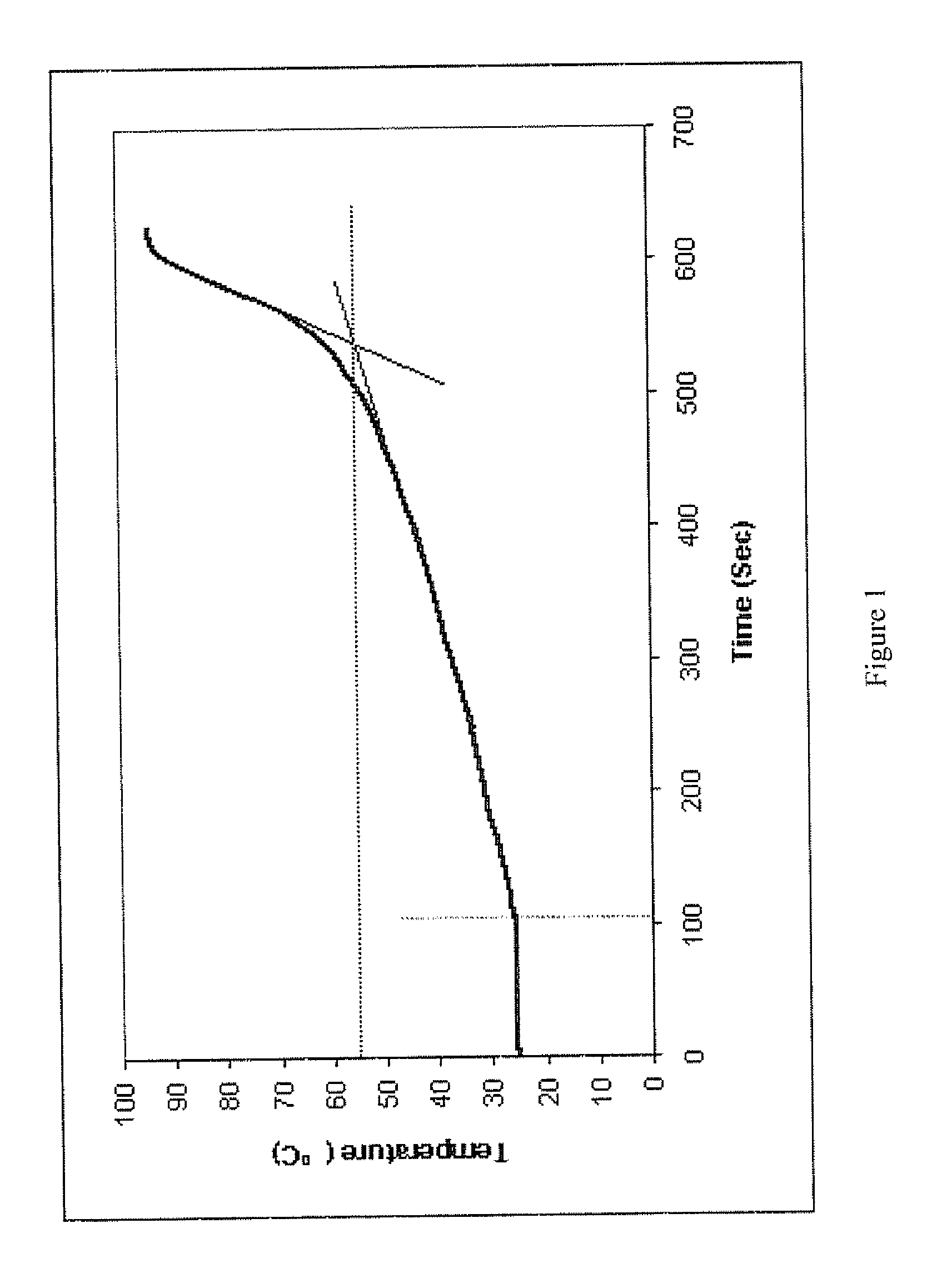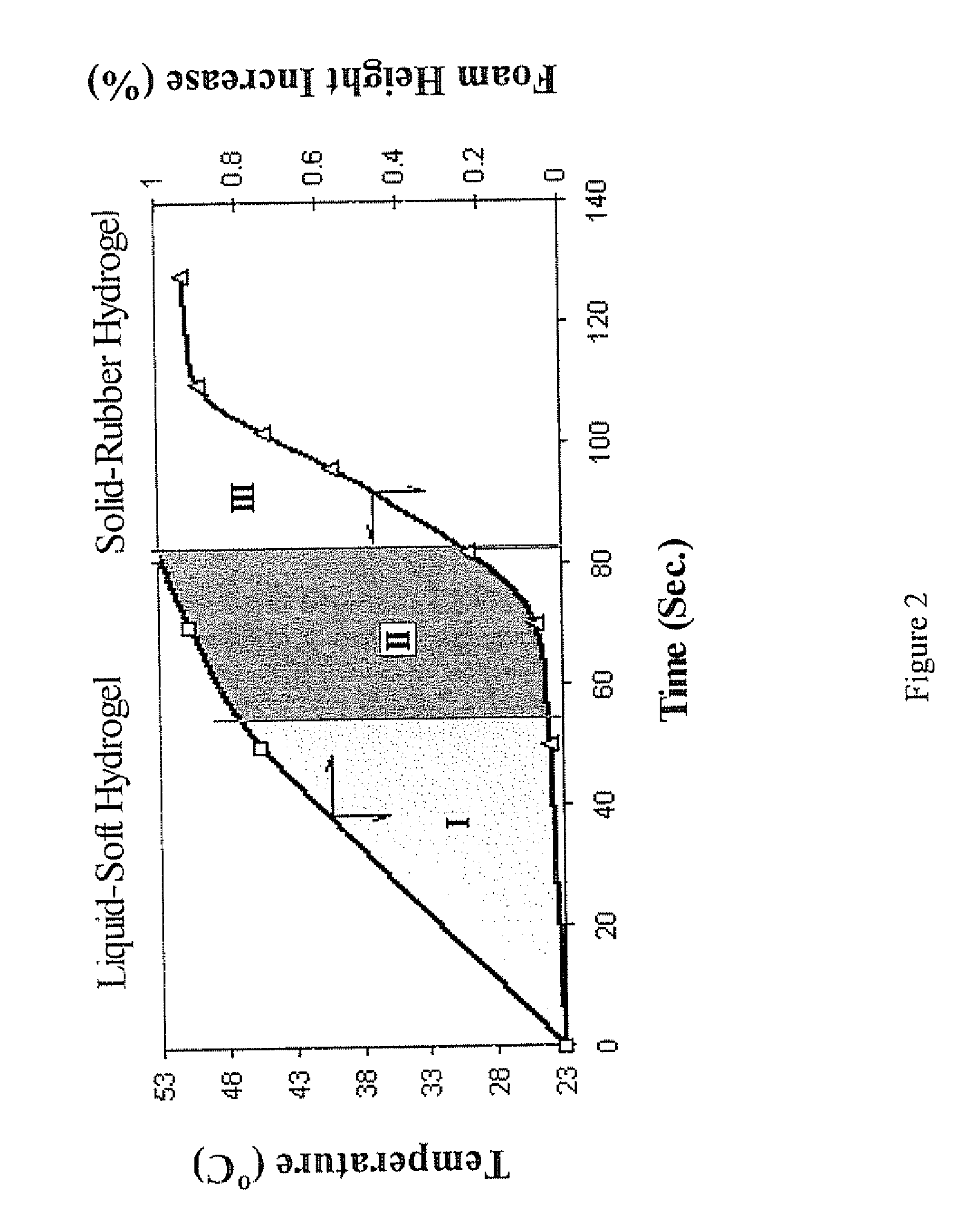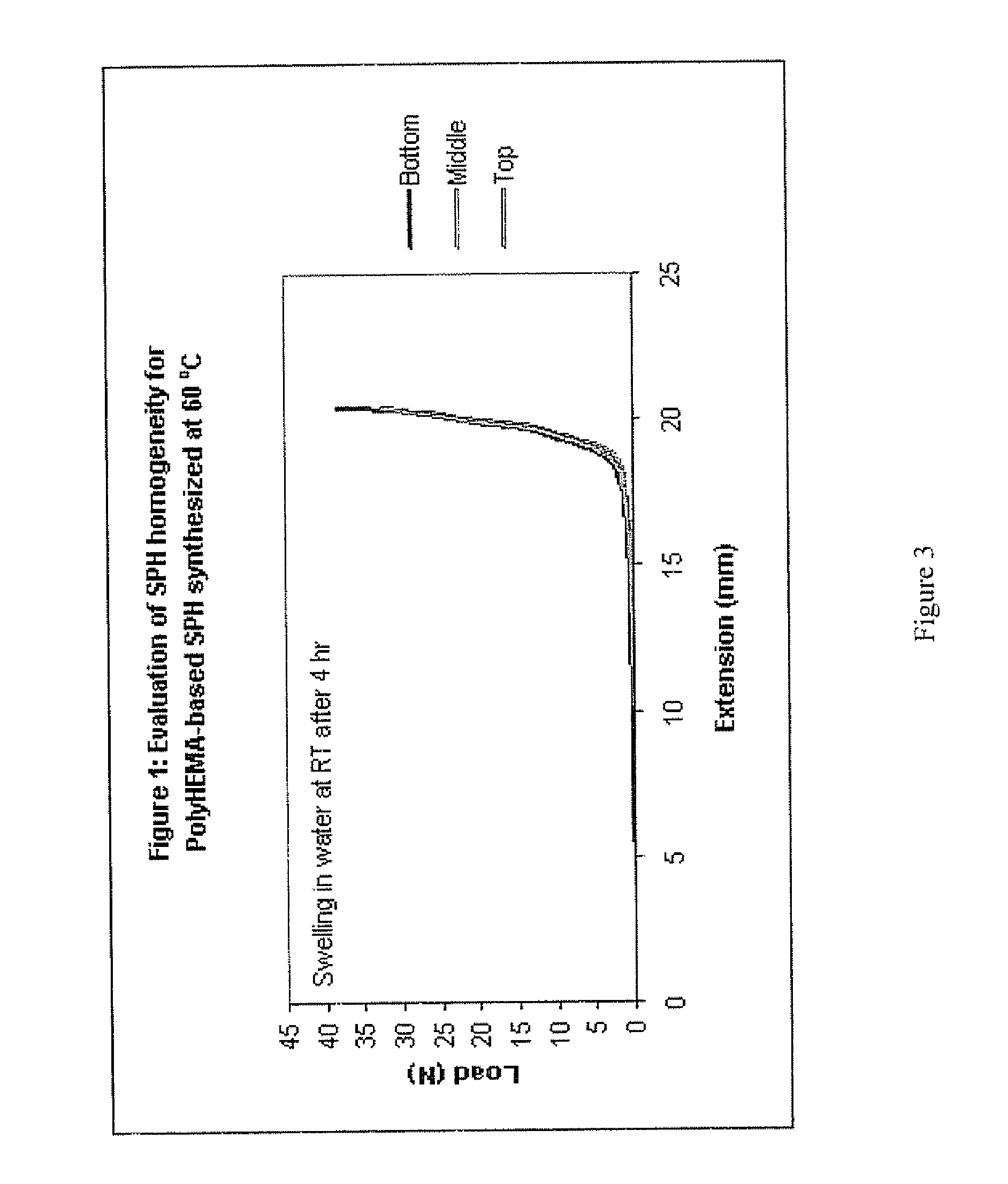Superporous hydrogels for heavy-duty applications
a hydrogel and superporous technology, applied in the direction of pharmaceutical delivery mechanism, capsule delivery, inorganic non-active ingredients, etc., can solve the problems of hydrogels that can swell to a very large size, hydrogels that suffer from weak mechanical properties, etc., and achieve stable physical and mechanical properties.
- Summary
- Abstract
- Description
- Claims
- Application Information
AI Technical Summary
Benefits of technology
Problems solved by technology
Method used
Image
Examples
example 1
Harmonized Foaming and Gelation in the Manufacture of Superporous Hydrogels
[0084]In order to prepare a SPH of the present invention, the foaming and polymerization reactions are simultaneously controlled (‘harmonized’). This is done by monitoring the time / temperature profile during SPH formation and noting the progress of the foaming process. In one example, based on a formulation containing hydroxyethyl methacrylate (HEMA, 2000 μL), polyethyleneglycol diacrylate (PEGDA, 40 μL), acrylic acid (50 μL), acetic acid (40 μL) F127-10% (250 μL), tetramethyl ethylenediamine (TMED-40%, 65 μL), water (200 μL), and ammonium persulfate (APS-10%, 250 μL), the temperature / time profile shown in FIG. 1 was obtained.
[0085]As indicated by Table 1 and FIG. 1, the temperature of this profile starts at 25° C. After an induction period of about 100 sec, the reaction starts and continues smoothly over the next 400 sec, with a linear increase of temperature to about 55° C. During this time it was observed ...
example 2
Low Temperature Preparation of a Superporous Hydrogel
[0094]All reaction mixture components in the following example were used in the amounts indicated in Table 2.
[0095]Using a standard Pyrex glass tube, HEMA, PEGDA, acrylic acid, acetic acid, Pluronic® F127, tetramethylethylene diamine (TMED), and deionized water were mixed together at 25° C. After 2 minutes, APS and solid SBC were added with continuous mixing to evenly disperse the foaming agent (SBC) and initiator (APS) until a foam began to form. When the reaction was complete (about 11 minutes), as evidenced by the temperature and foam height remaining constant, a 5 wt % aluminum chloride solution was added and the hydrogel was equilibrated by rubbing to reach its swollen state. Foam height was about 3 cm. The SPH formed is very tough. During hydration, the transition from glass to rubber is very sharp, while overall the swelling is very slow, resulting in a hydrated SPH that is very durable.
[0096]
TABLE 2ComponentAmountHEMA2000μ...
example 3
High Temperature Preparation of a Superporous Hydrogel
[0097]All reaction mixture components in the following example were used in the amounts indicated in Table 2.
[0098]Using a standard Pyrex glass tube, HEMA, PEGDA, acrylic acid, acetic acid, Pluronic® F127, tetramethylethylene diamine (TMED), deionized water, APS, and SBC were thoroughly mixed. After mixing, the glass tube was placed into a water bath at 60° C. and, using a spatula, SBC dispersion was continued until a foam started to form. The tube was left in the bath until the foam was set (about 4-5 min). Foam height was about 7 cm. The formed SPH was treated in 5 wt % aluminum chloride solution for 30 min. The SPHs formed at 60° C. show more plastic (slow recovery) behavior in their swollen state than those formed at 25° C., while the SPHs formed at 25° C. are more elastic (fast recovery).
[0099]FIG. 7 illustrates the difference in polyHEMA SPH strength based on the temperature at which the SPH formation is started. The polyHE...
PUM
| Property | Measurement | Unit |
|---|---|---|
| wt % | aaaaa | aaaaa |
| molecular weight | aaaaa | aaaaa |
| compressive strength | aaaaa | aaaaa |
Abstract
Description
Claims
Application Information
 Login to View More
Login to View More - R&D
- Intellectual Property
- Life Sciences
- Materials
- Tech Scout
- Unparalleled Data Quality
- Higher Quality Content
- 60% Fewer Hallucinations
Browse by: Latest US Patents, China's latest patents, Technical Efficacy Thesaurus, Application Domain, Technology Topic, Popular Technical Reports.
© 2025 PatSnap. All rights reserved.Legal|Privacy policy|Modern Slavery Act Transparency Statement|Sitemap|About US| Contact US: help@patsnap.com



